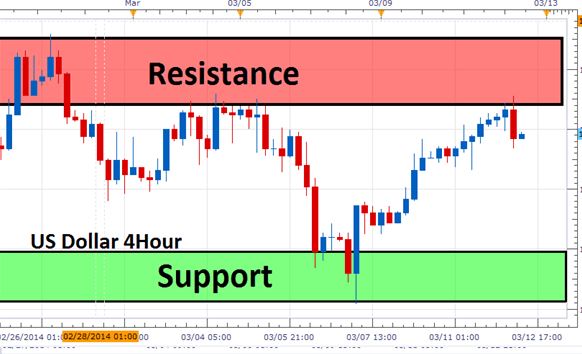It is natural for all traders to seek the best possible technique for achieving their trading goals. As range trading becomes increasingly popular, more and more people are looking to it as a means to profit from the forex market.
Range trading – and even the term itself – is alien to some people. It may change soon. The article explains range trading, what it stands for, and how to implement it.

What is range trading?
It is relatively intuitive to understand how to trade with the trend – a trader will follow the price movement in a clear direction. Traders may exit their positions with a profit when the trend comes to an end.
Traders who engage in range trading attempt to profit from a range-bound market, otherwise known as a trading range. How is this achieved?
The security price moves continuously between two prices over time, without ever progressing upward or downward. This is because the high of the range acts as resistance to the price increase, while the low of the range serves as support.
Range traders, unlike trend-followers, use both long and short positions, buying at support levels and selling at resistance levels. They do not follow trends directly but instead follow the market’s trend.
Steps to implement range trading
Follow these simple steps to trade the range strategy effectively.
1. Find the range
A range trade begins with finding the range. You can do this by establishing zones of support and resistance. You can create such zones by connecting the areas using horizontal lines that show highs and lows over a short period. Support is where the price is held back by traders looking to buy the market, while resistance is the overhead range where we aim to sell.
2. Time your entry
By using a series of methods, traders can time their entries according to a range. The use of an oscillator is one of the simplest and most popular methods. A few of the most common oscillators are RSI, CCI, and Stochastics. These technical indicators move around a centerline to track price movements depending on the mathematical calculation.
When the indicator reaches an extreme as the price reaches a zone of support or resistance, traders will enter the trade. Consequently, if momentum turns the price in the opposite direction, execution will occur.
3. Manage risk
You must not forget the final step in any range trading attempt once you have identified your range and determined your entry point. Regardless of how you choose to trade, risk management always plays a crucial role, but it is even more critical when you choose to range trade. If a resistance or support level breaks, traders will have every reason to leave a range-based position.
To ensure range trading remains risk-averse, it can be helpful to have a stop loss in place. For example, if you are selling a range’s resistance zone, you should place a stop-loss above a previous high, and if you are buying support, you can invert the process. As a result, you’ll be most successful when applying the proper risk management to your range trading.

Final thoughts
Traders who master a range of trading strategies attempt to profit from market conditions when no clear trend is evident. Traders should always use stop losses when trading ranges to protect themselves from potential breakouts since trading ranges won’t last forever.


